|
 Secure Site
Secure Site
|
 |
Archive for the 'Meditation Timers' Category
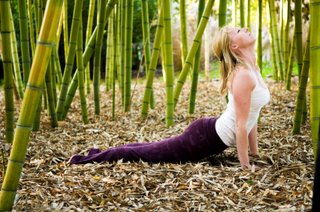 yoga in bamboo People prone to negative emotions and stress may be 40 percent more likely to develop mild cognitive impairment, according to a study in Neurology. Study authors hypothesize that a lifetime of stress could adversely affect an area of the brain responsible for regulating memory.
To stop stress from wreaking havoc on your brain, Nussbaum recommends devoting 30 minutes a day to calming activities, such as reading. Or, at a minimum, aim for 10 to 15 minutes of meditation.
adapted from Body + Soul
 Tibetan Bowl/Gong Alarm Clock
Now & Zen
1638 Pearl Street
Boulder, CO 80302
(800) 779-6383
Posted in Meditation Timers, Meditation Tools, mindfulness practice
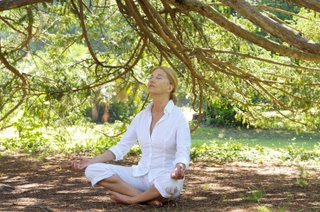 meditation under tree A good example of body-mind-body medicine is the work of Jon Kabat-Zinn, Ph.D., founder of the Stress Reduction Clinic at the University of Massachusetts Medical School and author of the bestsellers Full Catastrophe Living and Wherever You Go, There You Are. His Mindfulness-Based Stress Reduction (MBSR) approach, which combines gentle hatha yoga with mindfulness meditation, has garnered impressive results in scientific studies and is now taught at hundreds of hospitals and clinics worldwide.
In his work with patients with a wide variety of medical conditions, including chronic pain, cancer, arthritis, anxiety, and depression, Kabat-Zinn has observed that particular patients seem to respond better to some elements of the MBSR program. He has found that those with primarily physical complaints, such as joint pain, often do best when they use meditation to go through what he calls the “mind door.” Others, particularly those with mental problems such as anxiety or panic attacks, may do better with “body door” approaches like asana.
adapted from Yoga Journal by Timothy McCall, M.D.
Use our unique “Zen Clock” which functions as a Yoga Timer. It features a long-resonating acoustic chime that brings your meditation or yoga session to a gradual close, preserving the environment of stillness while also acting as an effective time signal. Our Yoga Timer & Clock can be programmed to chime at the end of the meditation or yoga session or periodically throughout the session as a kind of sonic yantra. The beauty and functionality of the Zen Clock/Timer makes it a meditation tool that can actually help you “make time” for meditation in your life. Bring yourself back to balance.
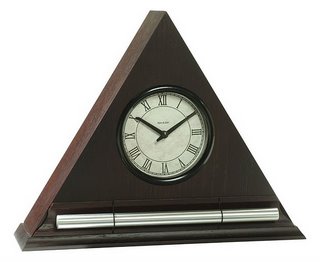 Gentle wake up alarm clock by Now & Zen Now & Zen – The Zen Alarm Clock & Timer Store
1638 Pearl Street
Boulder, CO 80302
(800) 779-6383
Posted in Chime Alarm Clocks, intention, Meditation Timers, Meditation Tools, mindfulness practice, Natural Awakening, Now & Zen Alarm Clocks, wake up alarm clock, yoga, Yoga Timer
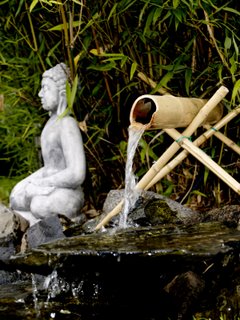 When less is more Make more time for doing the things you love by simplifying your life.
Judy Davis never buys anything new if she can help it. A 58-year-old freelance marketing consultant who lives in Red Bluff, California, she favors thrift store clothing and secondhand furniture. Instead of buying gifts, she gives plants from her garden or bags she has sewn from cut-up vintage gowns. Judy is part of a Bay Area group called the Compact. The Compacters have vowed not to buy anything new for a year except bare essentials: food, medicine, cleaning products, and underwear (although not, of course, lingerie from Paris). Although few people take frugality quite as seriously as the Compacters do, more and more of us are voluntarily cutting back on buying and consumption. Many individuals choosing this lifestyle happen to be yogis. The seminal work of yoga philosophy, Patanjali’s Yoga Sutra, frowns on materialism, and some yogis find that their asana practice alone helps them be happier with less.
The pursuit of the simple life is nothing new, of course. From Quakers to Transcendentalists, America has always had its share of those who associate simplicity with spiritual growth. Back-to-the-land hippies of the ’60s and ’70s found simplicity appealing for more secular reasons, such as ecological sustainability. But those who practice pared-down living today are not necessarily spiritual ascetics or off-the-grid granola types. Most are ordinary people modifying their everyday behavior-trying to be conscious about what they eat, drive, and buy.
In the past 15 years, “voluntary simplicity,” as it is called, has gained thousands of converts. Many books on the subject have been published, such as Janet Luhrs’s The Simple Living Guide, Cecile Andrews’s Circle of Simplicity: Return to the Good Life, and Linda Breen Pierce’s Choosing Simplicity: Real People Finding Peace and Fulfillment in a Complex World. Dozens of websites have sprung up, and nonprofits like Seeds of Simplicity and Simple Living America champion the cause. When the Compacters publicized their manifesto in January 2006, their Yahoo group swelled from about 50 in February to 1,225 in July, with members across America.
Most spiritual traditions encourage simple living, and yoga is no exception. In the Yoga Sutra, Patanjali laid out the yamas (moral restraints) and niyamas (observances), a set of 10 principles that are crucial to one’s progress along the yogic path. One of the yamas is aparigraha, often translated as “greedlessness.” But it means more than just taking only what you need, explains David Frawley, founder and director of the American Institute of Vedic Studies and author of Yoga and the Sacred Fire. Aparigraha also means “not having a lot of unnecessary things around yourself and not hankering after what other people have,” Frawley says. In other words, aparigraha also means keeping only what you need and wanting only what you need.
Aparigraha leads naturally to one of the niyamas: santosha, or “contentment,” being satisfied with the resources at hand and not desiring more. Ultimately, Frawley says, “Yoga is about transcending the desire for external things, which is the cause of suffering, and finding peace and happiness within.”
adapted from Yoga Journal, by Helena Echlin
 Zen Alarm Clocks Now & Zen
1638 Pearl Street
Boulder, CO 80302
(800) 779-6383
Posted in intention, Meditation Timers, Meditation Tools, mindfulness practice, Now & Zen Alarm Clocks, Well-being, zen, Zen Alarm Clock, Zen Timers
 Healing Gems In this relaxing ritual, you’ll gather stones to stimulate the body’s seven main energy centers, or chakras, in the Ayurvedic tradition. While many massage therapists use large stones to massage out tension in muscles, simply placing stones at strategic points on the body can encourage relaxation.
On a sunny day, take a stroll along the beach to gather seven dark-colored, smooth, round stones, preferably 1 or 2 inches in diameter. Set your Zen Timer to 15 minutes. Set them down in a sunny spot and allow them to warm up for 10 to 15 minutes. When you’re ready, lie flat on your back and place a stone on each of the seven chakras (see Vital Energy Centers), one by one. Let your body relax and sink into the ground; feel the weight of each stone and the sensation it creates on your skin. Visualize energy radiating from each chakra through your body, from the top of your head through your toes. Set your Zen Timer for 20 minutes. Relax for about 20 minutes, and then remove the stones.
adapted from Body + Soul, July/August 2006
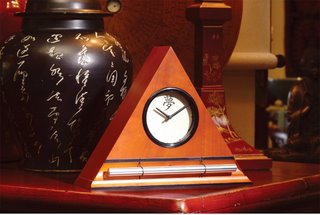 Zen Timers Now & Zen
1638 Pearl Street
Boulder, CO 80302
(800) 779-6383
Posted in intention, Meditation Timers, mindfulness practice, Now & Zen Alarm Clocks, Well-being, Zen Alarm Clock, Zen Timers
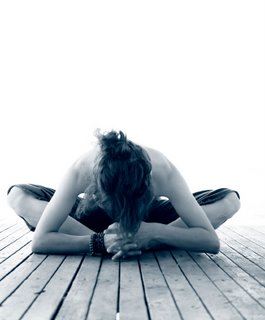 what energizes me? Universal fixes help, but managing your energy levels can also be a very personal process. Here’s what some whole-living luminaries do to recharge:
“To paraphrase Thoreau, my tonic is the wilderness. When I am low on energy, I go to nature, and it restores me every time. Whether I’m sitting next to a lake or canoeing in it, just being in a place where plants thrive feeds my energy.”
–Rosemary Gladstar, herbalist, teacher, and founder of United Plant Savers
“Doing deep yogic breathing, Sun Salutations to fun and upbeat rock music, and inverted poses like handstands get me going. Plus, I conserve my energy and redeploy it into the priorities of what must be done, cutting out all extraneous activities, like internal dialogue (negative and overwhelming banter), anger, frustration, and fears.”
–Ana Forrest, yoga pioneer and creator of Forrest Yoga
“My dogs walk me twice a day, and they’re the best energizer I know. There’s nothing like getting out in nature with two joyous beasts who don’t have to think twice about the meaning of unconditional love, both for me and the trail, however well beaten a track it is.”
–Kenny Ausubel, founder of the Bioneers Conference and co-executive director of the Collective Heritage Institute
 wilderness is a tonic “A frothy cup of green matcha tea and some breathing exercises help get me energized, as does an invigorating swim in my pool. Plus, looking forward to something with excitement always motivates me.”
–Andrew Weil, M.D., author of “Healthy Aging” and editor of Dr. Andrew Weil’s Self Healing Newsletter
“I love my work and get pulled in by endless to-do’s, often chugging along until I’m exhausted and ‘too-done.’ While exercise, yoga, and meditation help keep my energy high, so do regular breaks from the usual routine. I keep my knitting bag, beading box (I love to make malas and prayer bracelets as gifts), and a fast-paced mystery novel handy for 10- to 15-minute breaks three or four times a day. Letting go of responsibility to bask in creativity, or to drop into a fictional world very different from my own, keeps the juices flowing.”
–Joan Borysenko, Ph.D., psychologist and best-selling author of 12 books, including “Saying Yes to Change”
adapted from Body + Soul, September 2006
 Bamboo Zen Timer and Natural Alarm Clock with Gentle Chime Now & Zen
1638 Pearl Street
Boulder, CO 80302
(800) 779-6383
Posted in intention, Meditation Timers, Meditation Tools, mindfulness practice, nature, Walking Meditation, Well-being, zen
 Stress Cures From traffic jams to lost luggage, holiday travel can leave you frazzled. This year, get the holidays off to a stress-free start by arriving at your final destination composed and energized. Just follow these simple tips from Kate Hanley, author of The Anywhere, Anytime Chill Guide.
Stretch It Out
Where stress starts, tight muscles follow. Ease the strain of hours sitting in the sky or on the road with a simple, seated stretch Hanley calls The Number Four: Place an ankle over the opposite knee (making the shape of a four) then lean forward and rest your elbows on your shin.
Apply Pressure
If icy roads or midflight turbulence leave you with a pounding heart and racing thoughts, Hanley recommends a little acupressure. Simply curl each finger down until it touches the palm. The subtle move lessens anxiety by slowing down the heart and, in turn, quieting the mind.
Say It Out Loud
“The very act of traveling requires an element of surrender,” says Hanley. When plans go awry (a delayed flight, a missed exit) — and they will — slowly repeat the mantra “I’ll get there when I get there.” This helps you stay mindful of what’s out of your control.
Wish Them Well
With everyone rushing to get from point A to point B, you’re guaranteed to run in to someone who will ruffle your feathers. “The trick to not losing your cool,” says Hanley, “is to develop compassion.” Instead of flying off the handle at that impatient driver or curt customer service rep, try a kindness meditation. Hold an image of them in your mind and put yourself in their shoes with an empathetic thought: “I’m sure he’s anxious to see his family” or “I bet she’s had a long day.”
adapted from Body + Soul November 2009
 Zen Timer for your wellbeing practice Now & Zen
1638 Pearl Street
Boulder, CO 80302
(800) 779-6383
Posted in Chime Alarm Clocks, intention, Meditation Timers, Meditation Tools, mindfulness practice, Now & Zen Alarm Clocks, Well-being, Zen Timers
 how to start a walking meditation Instructor John LeMunyon, co-owner of Heartwood Yoga and Body-Centered Therapies (heartwoodyoga.com) in Birmingham, Ala., is a licensed massage therapist and registered yoga teacher whos been meditating for over 25 years.
What is it? This component of numerous meditation traditions slows the walking process with the intention of bringing into awareness its most basic partslifting the foot, swinging it, placing it downin order to bring a greater consciousness to daily life. When we break down the motion of walking, we realize how each action is actually a collection of sub-actions, and how the mind and body work together to create physical movement. This is not walking for transportation, its walking as a tool for developing mindfulness in the present moment, says LeMunyon.
You can practice walking meditation by itself, or combine it with one of the seated styles. Used as an interlude, the walking technique is a good way to embody the insights gained during seated practice and heighten their relevance to daily life.
Walking meditation shows clearly the Buddhist precept that all action is preceded by intention, says LeMunyon. Theres always an intention, and when we are present to the moment there is always a choice. Its at the level of intention that we make our choices of how skillfully we want to live our lives.
Whats it good for? When you find yourself restless or agitated, a physical practice like walking is a great way to quiet the mind and find grounding in the body. It can also help ease the transition from sitting meditation to the motion of real life, and vice versa.
How long does it take? To begin, try walking for about 15 steps in two directions, about five minutes. Beginners can try interspersing this with five minutes of sitting meditation.
 mindfulness walking How Do I Do It?
1. Find a private place indoors or out with level ground and at least 20 feet of space.
2. Stand in a relaxed position with your feet parallel, shoulders loose, arms draped at your sides or clasped lightly in front of or behind you. Focus your eyes softly on the ground about 6 to 8 feet ahead (looking right at your feet can be distracting).
3. Breathe in again as you lift the heel of your right foot. Pause and breathe out, leaving your toes resting on the ground.
4. Breathe in as you slowly swing your right foot forward. Place the heel of your right foot on the ground as you exhale and roll the rest of the foot down, transfering your weight so its balanced equally between both feet. Pause for a full breath.
5. Repeat with your left foot, matching each movement with an inhalation or exhalation, and continue for about 15 steps. The goal is to keep your mind fully focused on your bodily sensations; it may help to think or softly say, lift, pause, swing, place, transfer, pause as you perform these movements.
6. When youve completed your paces in one direction, come to a stop with your feet parallel, and pause for a few breaths. Then turn slowly, using the same movement pattern, and match each movement of your turn with an inhale or exhale. Pause again, facing the path you just walked. End by retracing your steps back to where you started.
Tip: You may feel self-conscious walking this way, so try it in your hall or backyard rather than a park where onlookers may distract you.
adapted from Natural Health Magazine, By Frances Lefkowitz
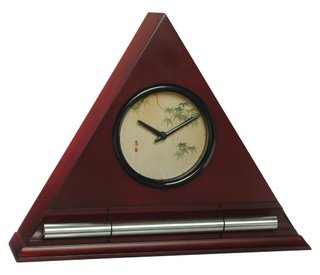 Zen Chime Clock, Meditation Timer and Alarm Clock for A Progressive Awakening Now & Zen
1638 Pearl Street
Boulder, CO 80302
(800) 779-6383
Posted in intention, Meditation Timers, Meditation Tools, mindfulness practice, Zen Timers
 mindful eating Conscious eating
Just as you bring mindfulness to your yoga practice, you can be mindful at mealtime. Yoga philosophy and all of the world’s healthiest diets recommend a conscious eating practice for optimal health. Mediterranean cultures traditionally regard meals as experiences to be savored and a life pleasure meant to be enjoyed. Asian cultures consider eating an aesthetic experience and reverentially enjoy beautifully prepared and presented foods that nourish the senses—to see, smell, touch, taste, and observe any sounds—while slowly eating the meal.
The Slow Food movement is reviving and sharing the benefits of conscious eating and the enjoyment of wholesome foods. Slow Food USA, part of the international Slow Food movement, is dedicated to supporting local farmers, the production of regional foods, and small producers. The movement promotes a slower lifestyle that cultivates time for conscious food preparation and eating, and opposes the fast life exemplified by corporatized foods and degradation of farmland.
 conscious eating, a mindfulness practice Eat Here Now
How can you incorporate mealtime mindfulness into your own life? Try the following essential components of a conscious-eating practice.
1. Schedule time for meals. Allocate at least twenty minutes each for meals and/or enough time to truly experience the food you eat. Avoid overeating. Set your Zen Timer for at least 20 minutes.
2. Eliminate distractions during meals. Eat slowly in a calm, quiet environment without a blaring television, loud music, or your computer as an accompaniment. The experience of the meal should be the focus of your attention and entertainment.
3. Enjoy conscious eating. Practice a state of awareness while you eat. Savor the appearance, smell, and taste of your food, so you can be truly satisfied. Chew each bite twenty times, which will help digestion and keep your attention in the moment. Enjoy the rasa, or “juice” of the food, through our senses.
4. Practice snacking awareness. Avoid mindless snacking, eating while you’re talking, and snacking just because food is present.
5. Use tasteful presentation. Small portions beautifully arranged on an attractive plate nourish the senses and encourage you to savor each bite.
6. Practice cooking meditation. Feed your soul by incorporating mindfulness as you cook. Allow cooking to express your love and be the ultimate gift to others, as the food we eat literally becomes a part of us physically, mentally, and spiritually, in our cells, skin, bones, and thoughts.
7. Count your blessings. Before your meal, experience a moment of thankfulness for having food.
adapted from Natural Home Magazine, November/December 2005 by Elaine Gavalas
 Bamboo Zen Timers with Chime Now & Zen
1638 Pearl Street
Boulder, CO 80302
(800) 779-6383
Posted in Beauty, Chime Alarm Clocks, intention, Meditation Timers, mindfulness practice, Well-being, Zen Timers
 Body and soul in balance An imbalance in your mental energy can leave you unable to focus. Break the pattern, and you’ll effectively return to the present moment — and the task at hand. “I call it changing your state,” says Lucy Jo Palladino, Ph.D., psychologist, attention expert, and author of “Find Your Focus Zone.”
One of Palladino’s tried-and-true balancing practices is four-corner breathing, which combines the use of an outer focal point (a window, a picture frame) with deep, rhythmic breaths. Try this meditation to jolt yourself into high gear or settle a skittish mind. It lowers adrenaline, restores balance, and resets your attention, helping you focus.
Four-Corner Breathing How-To
1. Find an object nearby that has four corners — a box, your monitor, or even this page.
2. Start at the upper-left-hand corner and inhale for 4 counts.
3. Turn your gaze to the upper-right-hand corner and hold your breath for 4 counts.
4. Move to the lower-right-hand corner. Exhale for 4.
5. Now shift your attention to the lower-left-hand corner. Tell yourself to relax and smile. Repeat 3 to 5 times, or as often as you like.
adapted from Body + Soul Magazine, June 2008 by Jill Russell
Use our unique “Zen Clock” which functions as a Yoga & Meditation Timer. It features a long-resonating acoustic chime that brings your meditation or yoga session to a gradual close, preserving the environment of stillness while also acting as an effective time signal. Our Yoga Timer & Clock can be programmed to chime at the end of the meditation or yoga session or periodically throughout the session as a kind of sonic yantra. The beauty and functionality of the Zen Clock/Timer makes it a meditation tool that can actually help you “make time” for meditation in your life. Bring yourself back to balance.
 Zen Timepiece with brass bowl, a perfect meditation timer with gentle gong Now & Zen – The Zen Alarm Clock & Meditation Timer Store
1638 Pearl Street
Boulder, CO 80302
(800) 779-6383
Posted in intention, Meditation Timers, Meditation Tools, mindfulness practice, Well-being, Zen Timepiece by Now & Zen, Zen Timers
 Savasana Pose - mindfulness practice Savasana, (corpse pose) is a relaxing posture that is intended to rejuvenate the body, mind and spirit. It is recommended that you set aside 20 minutes every day for Savasana , the most restful of the yoga positions. Here are some tips to get you started:
1. Set your meditation timer for 20 minutes so you don’t have to watch the clock. Use the Bamboo Zen Timer by Now & Zen with a calming chime. 2. Lie down on your back on a soft yet firm surface, such as a rug (but not a bed). Place a rolled pillow or blanket under your knees if that feels good, and cover your eyes with a soft cloth. Cover yourself with a light blanket.
3. Let your arms and legs roll slightly out from the body as you relax and begin to take a series of long, slow breaths, setting an intention to disengage from the external world. If your mind starts spinning away, simply return your attention to the breath.
4. When the meditation timer chimes, bend your knees, roll to the side, and sit up. After a moment or two of stillness, reengage with your day.
5. Repeat this every day. Savasana is a good way to reduce stress in your life and give you extra energy for the rest of your day.
 meditation timers with chime
Now & Zen
1638 Pearl Street
Boulder, CO 80302
(800) 779-6383
Posted in Meditation Timers, Meditation Tools, mindfulness practice, Well-being, yoga, Yoga Timer, Yoga Timers by Now & Zen, Zen Timers
« Previous Page — « Previous Entries
Next Entries » — Next Page »
|
|
|
|